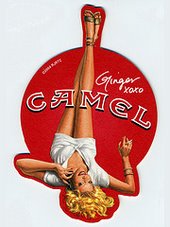
New marketing good electronic cigarette is spread in high gear in Holland. This Chinese invention just began to work up the European market, and according to experts, Dutchmen, one of the most smoking European nation, organized the trade of electronic cigarettes faster than other, providing with cigarettes its own people and neighboring states.
Nicotine toy works by the following principle: ampoules with nicotine are placed into cigarette holder in the form of cigarette and during heating nicotine inhalation occurs. There is no tobacco smoke, no smell from electronic smoking, and the organism is not exposed to the intoxication from tars. In 2007 E Smoking company opened the first store of electronic smoking in Alkmaar. In the near future it is planned to establish branch offices in Germany and in England.
The marketing director of the company Mr. Jacobs says that the sales volume increase every week. 95% of sales are carried out online, cigarettes are sent not only all over Holland, but to Great Britain. Such cigarettes are three times cheaper than usual cigarettes. Tobacco prices are very high in England, so Englishmen have possibility to save their money.
E Smoking carries out aggressive marketing politics and soon it is planned to launch advertising campaign at Holland radio. As this product does not contain tobacco, no legislative restrictions are applied to it, and everybody can smoke electronic cigarette in train, office or in restaurant.
Electronic cigarette does not differ from nicotine plasters, chewing gum or other medical supplies, which are applied is the alternative to tobacco smoking. However, this preparation has not undergone pharmacological examinations in Holland, it is still unknown whether such cigarettes are dangerous or not.
In the Netherlands any kind of pharmaceutical has certificate and registration. Confrontation between followers of healthy way of life and followers of traditional Dutch liberalism goes on. It is expected that in the country, which decriminalized light drugs and legalized prostitution, the terminal decision of tobacco question will be based on pragmatism and common sense.
























